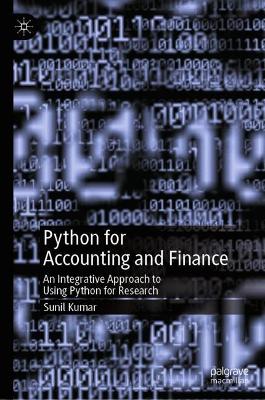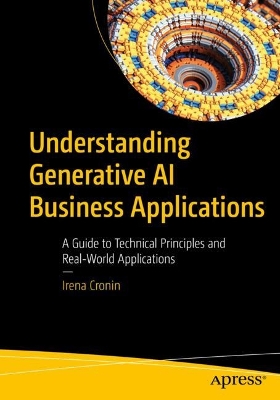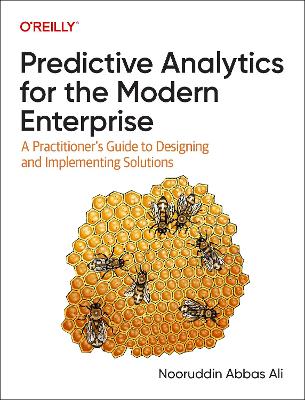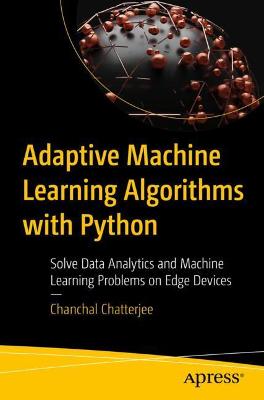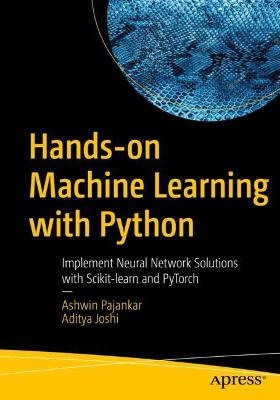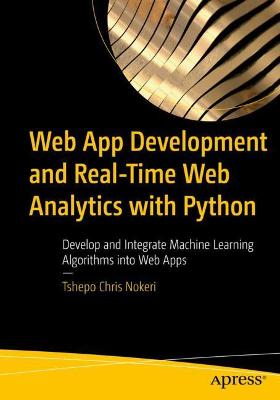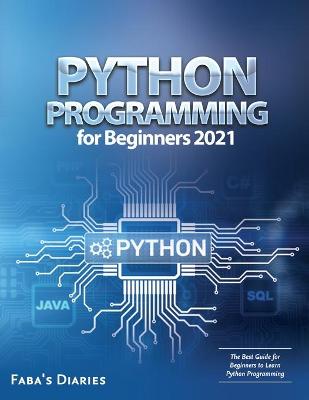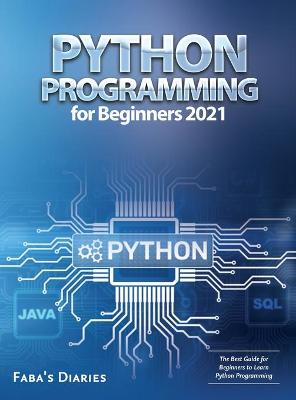Interpreting Machine Learning Models
 portes grátis
portes grátis
Interpreting Machine Learning Models
Learn Model Interpretability and Explainability Methods
Nandi, Anirban; Pal, Aditya Kumar
APress
12/2021
343
Mole
Inglês
9781484278017
15 a 20 dias
699
Chapter 2: Introduction to Model InterpretabilityChapter Goal: This chapter will talk about the importance and need of interpretability and how businesses employ model interpretability for their decisionsSub-Topics:* Why is interpretability needed for machine learning models* Motivation behind using model interpretability* Understand social and commercial motivations for machine learning interpretability, fairness, accountability, and transparency* Get a definition of interpretability and learn about the groups leading interpretability research
Chapter 3: Machine Learning Interpretability TaxonomyChapter Goal: A machine learning taxonomy is presented in this section. This will be used to characterize the interpretability of various popular machine learning techniques.Sub topics:* Understanding and trust* A scale for interpretability* Global and local interpretability* Model-agnostic and model-specific interpretability
Chapter 4: Common Properties of Explanations Generated by Interpretability MethodsChapter goal: The purpose of this chapter to explain readers about evaluation metrics for various interpretability methods. This will help readers understand which methods to choose for specific use cases
Sub topics: * Degree of importance * Stability* Consistency * Certainty* Novelty
Chapter 5: Timeline of Model interpretability Methods DiscoveryChapter goal: This chapter will talk about the timeline and will give details about when most common methods of interpretability were discovered
Chapter 6: Unified Framework for Model ExplanationsChapter goal: Each method is determined by three choices: how it handles features, what model behavior it analyzes, and how it summarizes feature influence. The chapter will focus in detail about each step and will try to map different methods to each step by giving detailed examplesSub topics1: * Removal based explanations* Summarization based explanations
Chapter 7: Different Types of Removal Based ExplanationsChapter goal: This chapter will talk about the different types of removal based methods and how to implement them along with details of examples and Python packages, real life use cases etc.Sub topics: * IME(2009)* IME(2010)* QII* SHAP* KernelSHAP* TreeSHAP* LossSHAP* SAGE* Shapley* Shapley* Permutation* Conditional* Feature* Univariate* L2X* INVASE* LIME* LIME* PredDiff* Occlusion* CXPlain* RISE* MM* MIR* MP* EP* FIDO-CA
Chapter 8: Different Types of Summarization Based ExplanationsChapter goal: This chapter will talk about the different types of summarization based methods and how to implement them along with details of examples and python packages, real life use cases etc.
Sub topics:* Magie* Anchor* Recursive partitioning* GlocalX
Chapter 9: Model Debugging Using Output of the Interpretability MethodsChapter goal: This chapter will help reader understand how to use the output of the interpretability methods and convert those outputs in to a business ready text which can be understood by non tech business teams
Chapter 10: Limitation of Popular Methods and Future of Model InterpretabilityChapter goal: Give users a brief understanding of limitations of some commonly used methods and how business teams find it difficult to deploy models even after usage of interpretability methods. The chapter will also touch upon the future advances in the domain of interpretability
Chapter 11: Use of Counterfactual Explanations to Better Understand Model Performance and BehaviourChapter goal: This chapter will introduce readers to the concept of counterfactual explanations and will cover both the basics and the advanced explanation of the algorithm. The chapter will also cover some of the advance Counterfactual explanations methods in detailsSub topics:* CounterFactual guided by prototypes* CounterFactual explanations * MOC (Multi Objective Counterfactuals)* DiCE* CEML
Chapter 12: Limitations and Future Use of Counterfactual ExplanationsChapter goal: The chapter will be a closing chapter on counterfactual explanations and will talk about the future scope and advancements in the domain of model explainability
Chapter 2: Introduction to Model InterpretabilityChapter Goal: This chapter will talk about the importance and need of interpretability and how businesses employ model interpretability for their decisionsSub-Topics:* Why is interpretability needed for machine learning models* Motivation behind using model interpretability* Understand social and commercial motivations for machine learning interpretability, fairness, accountability, and transparency* Get a definition of interpretability and learn about the groups leading interpretability research
Chapter 3: Machine Learning Interpretability TaxonomyChapter Goal: A machine learning taxonomy is presented in this section. This will be used to characterize the interpretability of various popular machine learning techniques.Sub topics:* Understanding and trust* A scale for interpretability* Global and local interpretability* Model-agnostic and model-specific interpretability
Chapter 4: Common Properties of Explanations Generated by Interpretability MethodsChapter goal: The purpose of this chapter to explain readers about evaluation metrics for various interpretability methods. This will help readers understand which methods to choose for specific use cases
Sub topics: * Degree of importance * Stability* Consistency * Certainty* Novelty
Chapter 5: Timeline of Model interpretability Methods DiscoveryChapter goal: This chapter will talk about the timeline and will give details about when most common methods of interpretability were discovered
Chapter 6: Unified Framework for Model ExplanationsChapter goal: Each method is determined by three choices: how it handles features, what model behavior it analyzes, and how it summarizes feature influence. The chapter will focus in detail about each step and will try to map different methods to each step by giving detailed examplesSub topics1: * Removal based explanations* Summarization based explanations
Chapter 7: Different Types of Removal Based ExplanationsChapter goal: This chapter will talk about the different types of removal based methods and how to implement them along with details of examples and Python packages, real life use cases etc.Sub topics: * IME(2009)* IME(2010)* QII* SHAP* KernelSHAP* TreeSHAP* LossSHAP* SAGE* Shapley* Shapley* Permutation* Conditional* Feature* Univariate* L2X* INVASE* LIME* LIME* PredDiff* Occlusion* CXPlain* RISE* MM* MIR* MP* EP* FIDO-CA
Chapter 8: Different Types of Summarization Based ExplanationsChapter goal: This chapter will talk about the different types of summarization based methods and how to implement them along with details of examples and python packages, real life use cases etc.
Sub topics:* Magie* Anchor* Recursive partitioning* GlocalX
Chapter 9: Model Debugging Using Output of the Interpretability MethodsChapter goal: This chapter will help reader understand how to use the output of the interpretability methods and convert those outputs in to a business ready text which can be understood by non tech business teams
Chapter 10: Limitation of Popular Methods and Future of Model InterpretabilityChapter goal: Give users a brief understanding of limitations of some commonly used methods and how business teams find it difficult to deploy models even after usage of interpretability methods. The chapter will also touch upon the future advances in the domain of interpretability
Chapter 11: Use of Counterfactual Explanations to Better Understand Model Performance and BehaviourChapter goal: This chapter will introduce readers to the concept of counterfactual explanations and will cover both the basics and the advanced explanation of the algorithm. The chapter will also cover some of the advance Counterfactual explanations methods in detailsSub topics:* CounterFactual guided by prototypes* CounterFactual explanations * MOC (Multi Objective Counterfactuals)* DiCE* CEML
Chapter 12: Limitations and Future Use of Counterfactual ExplanationsChapter goal: The chapter will be a closing chapter on counterfactual explanations and will talk about the future scope and advancements in the domain of model explainability

